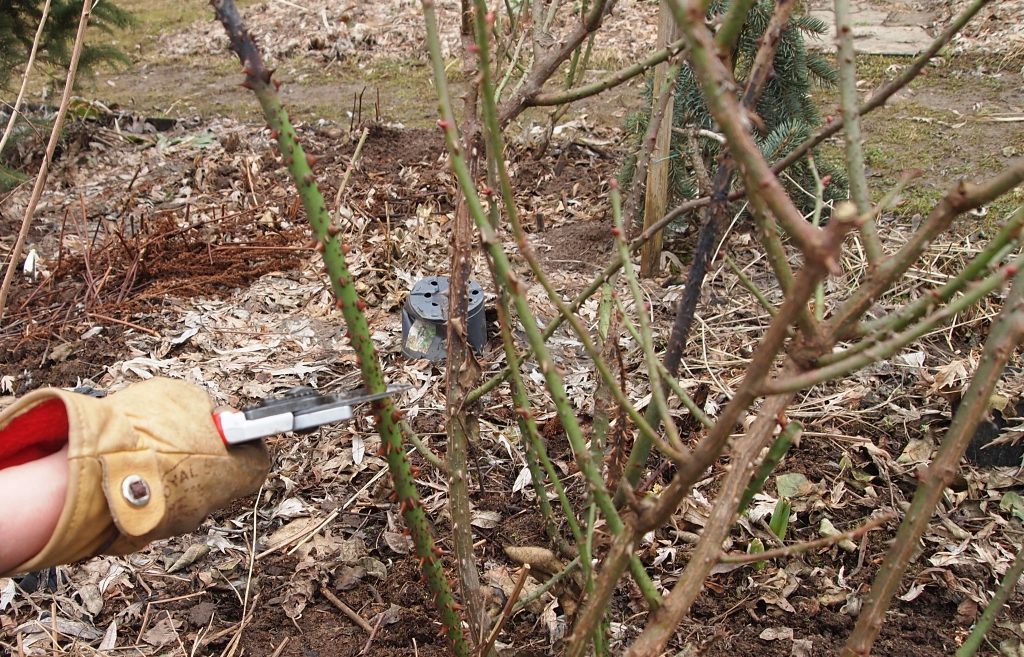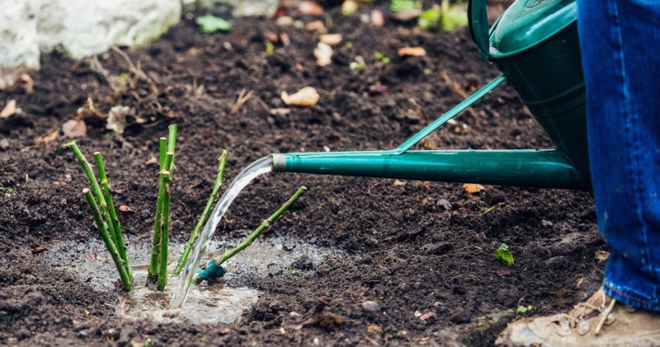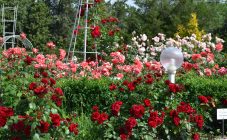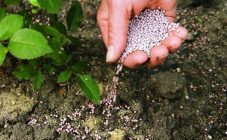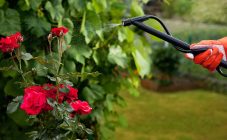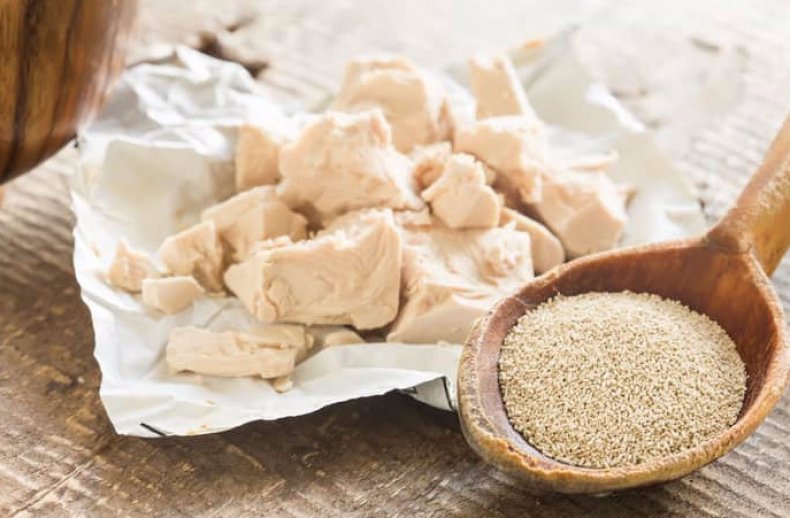Content:
In the course of growth, any flower requires close attention. Roses are not much different in this. Moreover, these bushy plants require special care several times a year. Choosing the right planting site with a specific soil angle, light level, and drainage are just basic needs. Roses are very capricious flowers, and this makes it difficult to grow them by novice summer residents and gardeners.
Key ingredients of rose care
Be sure to trim. It is necessary to remove broken, frozen and weak branches so that they do not take away energy for development and regeneration. Pruning is carried out in the spring, approximately 2 weeks after removing the insulation. Ideal conditions are to carry out the procedure during the swelling of the buds, before the leaves open.
Pruning features:
- in miniature roses, in addition to the usual pruning, it is necessary to reduce the length of the shoots by half;
- from the whole bush of climbing varieties, 6 of the largest shoots are left, which are slightly shortened;
- among standard roses there is a practice to cut off all shoots, leaving stems up to 20 cm long;
- among very large roses, cut over 5 and 6 buds;
- ground cover roses and rose hips need to be processed minimally, since for them pruning is only decorative.
Top dressing is carried out after planting roses. You can use compost or manure as fertilizer. However, it is better not to use the second option fresh. The best option is to use manure that has lain in the compost pit for up to six months. Such feeding is needed every 2 years. However, every summer you can add other fertilizers: ash, ready-made complexes, yeast. And the latter often raise many questions, can roses be fed with yeast? Yes you can, but there are some precautions you should take.
Why do you need to feed roses
Fertilizing roses plays an essential role in their agricultural technology. During flowering, a huge amount of nutrients is wasted, which must be compensated for. In the absence of feeding, bush roses will greatly slow down in development, flowering will be short, and the buds will not reach their maximum size.
In a year, you will need to feed the roses several times, with different fertilizers with different compositions. Necessary substances for roses:
- nitrogen greatly increases the growth rate of leaves and stems;
- phosphorus improves the plant's ability to withstand adverse environmental conditions;
- potassium and iron play an essential role in the water-salt balance, strengthen the defense against diseases;
- trace elements have a general tonic effect on the rose;
- organic elements are needed for the growth and development of the stem and shoots. Without them, the plant cannot grow.
The most popular way to feed roses is with yeast. This is a material with a fairly diverse composition. They include many vitamins, trace elements, proteins and carbohydrates.
The benefits of yeast for plants:
- activate the growth processes of the stem, shoots and roots;
- significantly strengthen the plant's immunity, helping to better resist diseases and viruses.
However, there is still a drawback from using the substance:
- the pH of the environment decreases, which is why the soil becomes acidic and becomes unsuitable for many plants and microorganisms. Therefore, it must be used in parallel with ash solutions;
- potassium and calcium are gradually washed out from the soil;
- if the solution gets on the leaves, they may turn yellow and shedding;
- when feeding at the wrong time, disturbances in budding are possible.
Yeast top dressing recipe
A yeast rose dressing can be prepared in several ways. For this, you can use both dry and wet yeast. In fact, they are very fast growing unicellular fungi.
Feeding roses with fresh yeast
For cooking, you need 100 g of yeast and 1 liter of water at room temperature, as well as a pinch of sugar. Instead, you can use any sugar-containing products - jam, jams, marshmallow and honey. All ingredients must be mixed in a container, wait for fermentation, and then pour out the entire five-liter bucket, which is diluted to the top with water. The resulting top dressing must be poured under the root, 1 liter per bush. This fertilizer is not suitable for long-term storage, so it should be used immediately after preparation.
Dry yeast recipe
The cooking method is similar to the previous one. You will need 10 g of baker's yeast, 10 liters of water, 2 tbsp. tablespoons of sugar-containing foods. For cooking, you need to mix all the ingredients, wait until the mixture ferments. Then pour another 10 liters of water and feed under the root. The solution is not suitable for long-term storage.
Yeast with herbal tincture
To prepare the solution yourself, you will need a large volume container, preferably 200 liters. It is necessary to fill it with weeds as much as possible, and then fill it with water. Next, you should wait 2-3 weeks until natural fermentation processes take place. It is best if the container is located in a well-lit place.
After the end of fermentation, you must completely remove all the grass from the barrel. The easiest way to do this is with a pitchfork. Then you can add a concentrate of humate, phytosporin or other substances there. Stir and add 200 g of dry yeast concentrate. It is possible to add half a bucket of ash there. For use, the infusion must be diluted in 10 liters of water.
How to properly feed (water) roses with yeast, ash and other folk remedies
Yeast is not quite rightly called a means for feeding roses. Their action is rather similar to growth stimulants. To fertilize shrubs, you need to add minerals to the fertilizing of roses from yeast. The next year, after applying such fertilizer, the soil will be very depleted, and it will take a lot of time and effort to restore its fertility.
In order not to harm the soil, you need to follow these recommendations:
- before using the fertilizer, it is advisable to pour ash or ash into the ground;
- the first time feeding is carried out in the spring when the first green leaves appear;
- in order for unicellular fungi to survive in the soil, its temperature should not be lower than 20 ° C;
- the next and last feeding is carried out in the summer (in June or July), when the roses have already faded.
Tips and tricks from experienced florists and gardeners
A list of tips on how to properly fertilize roses:
- In order for unicellular fungi to actively multiply and not contribute to fermentation processes, it is necessary that the water in which the solution is prepared be at room temperature from 20 ° C to 45 ° C. At lower or higher temperatures, microorganisms will die or lose their activity.
- It is forbidden to store the prepared solutions, especially in the open air, otherwise useful substances will quickly decompose. Therefore, you need to use it right away.
- Microorganisms contribute to the leaching of minerals from the soil, therefore, you must first fertilize the soil with all the necessary substances. Usually ash is used for this. You need to add it a week before using the yeast.
- You need to pour yeast solutions exclusively at the root.
- Such feeding is applied no more than 2 times a year.
Using yeast as a fertilizer for roses is a fairly effective way to stimulate the growth of moody flowers. Microorganisms gradually deplete the soil, which greatly harm it. In addition, if they hit the flower, they can contribute to its death, therefore, precautions must be taken when using a yeast solution.
